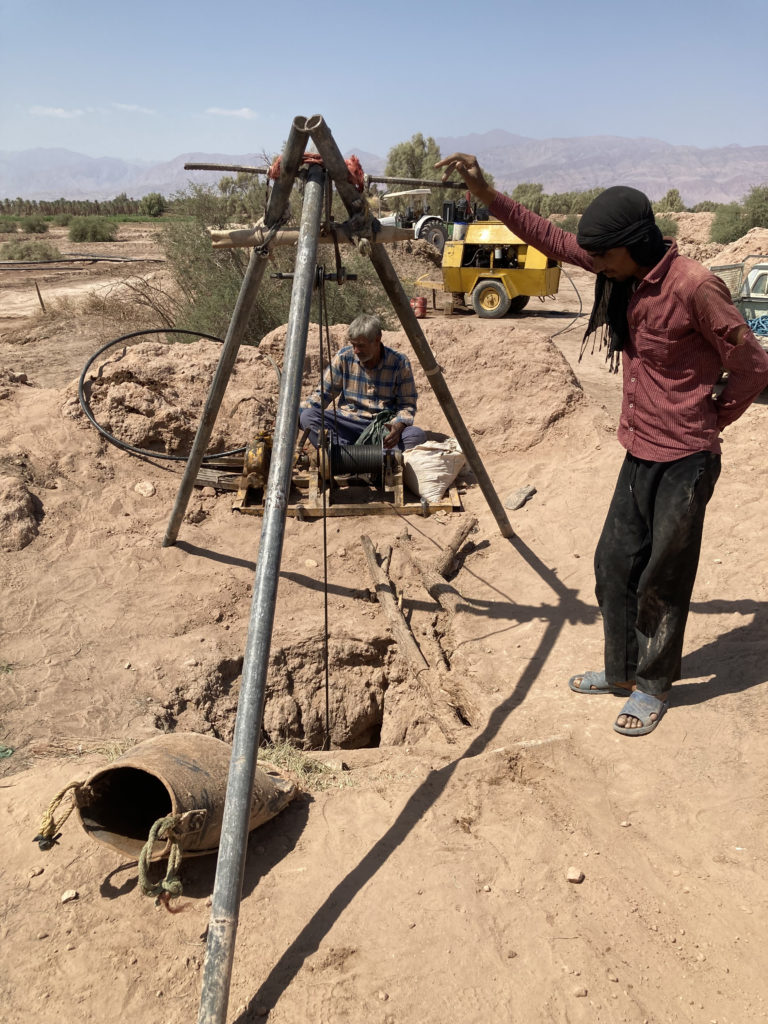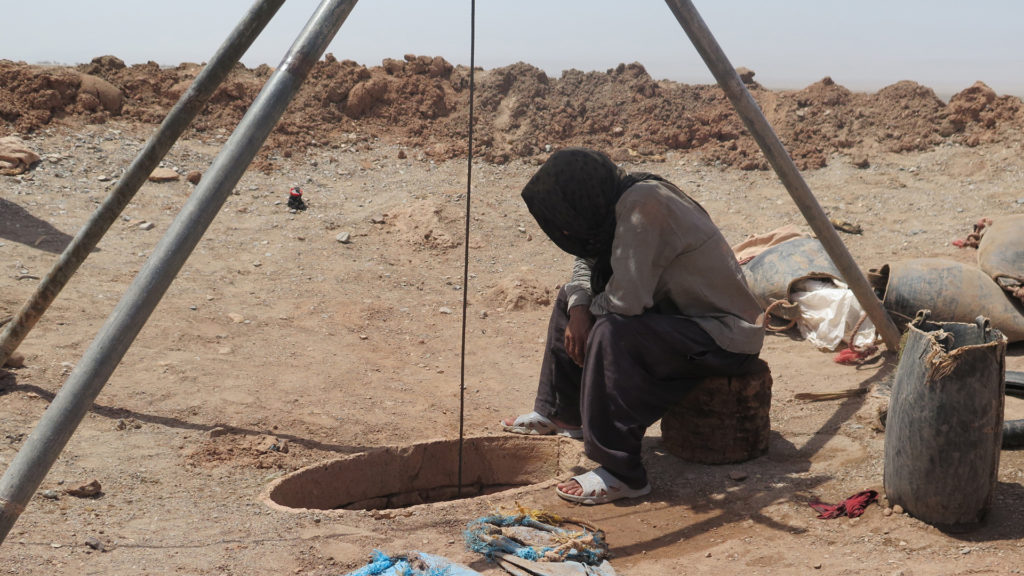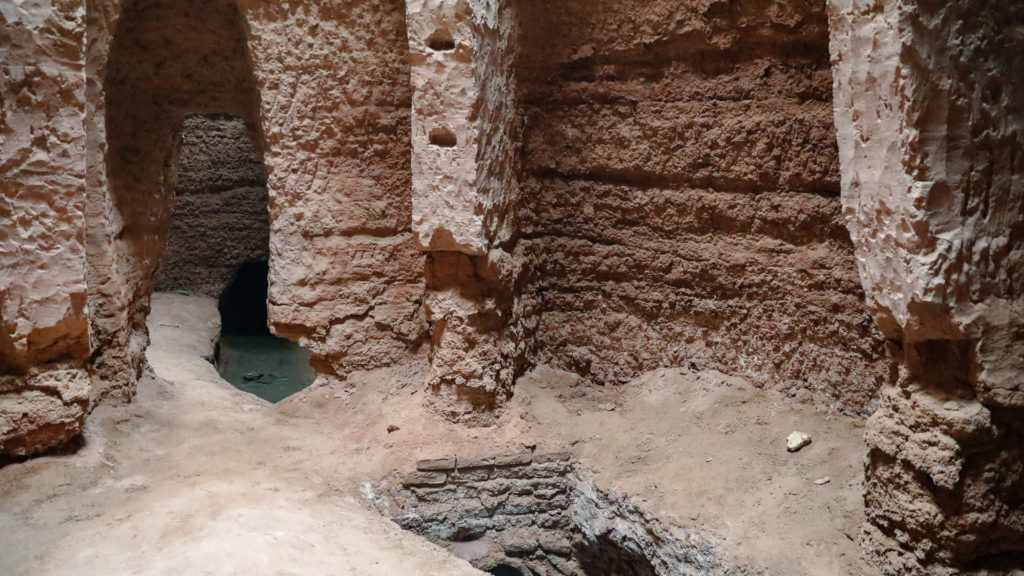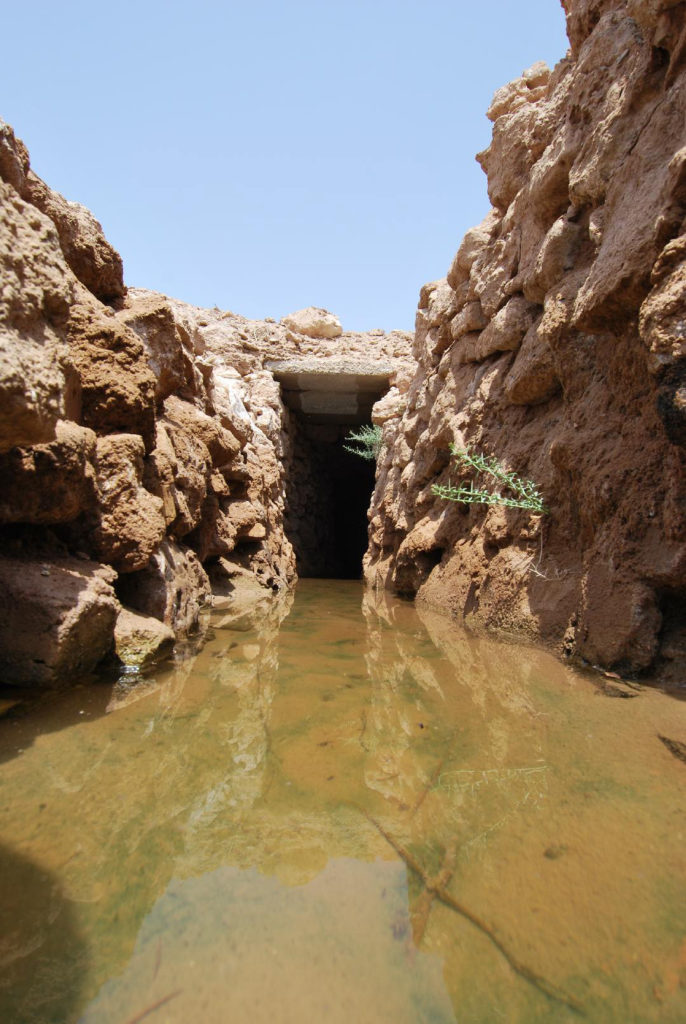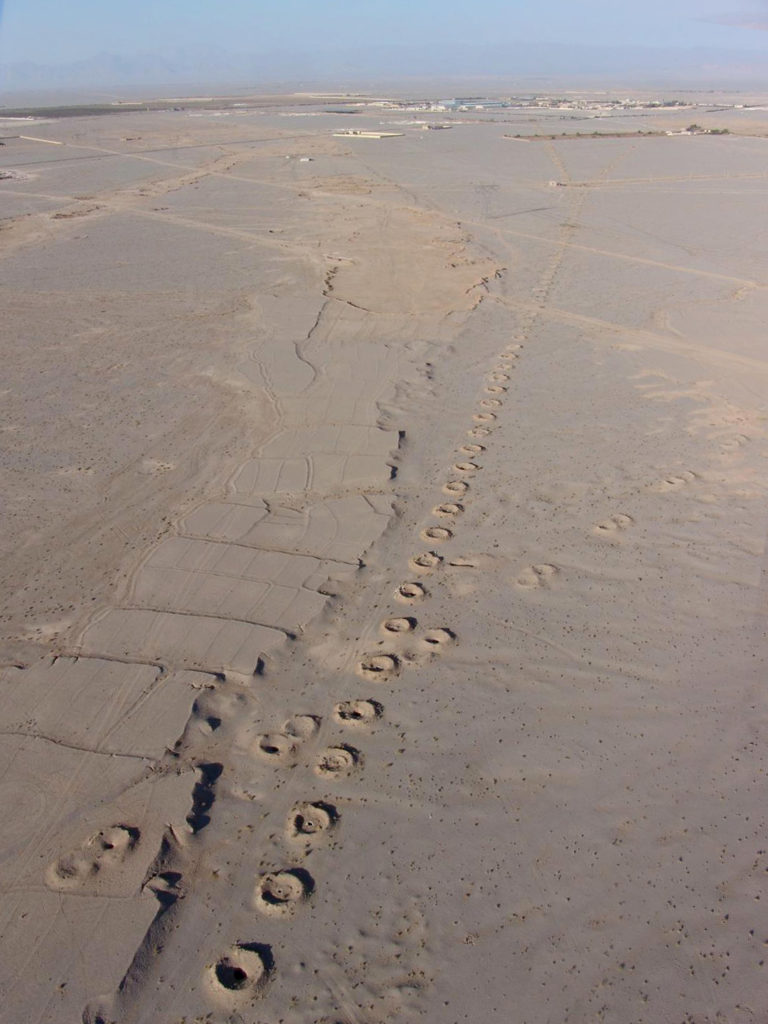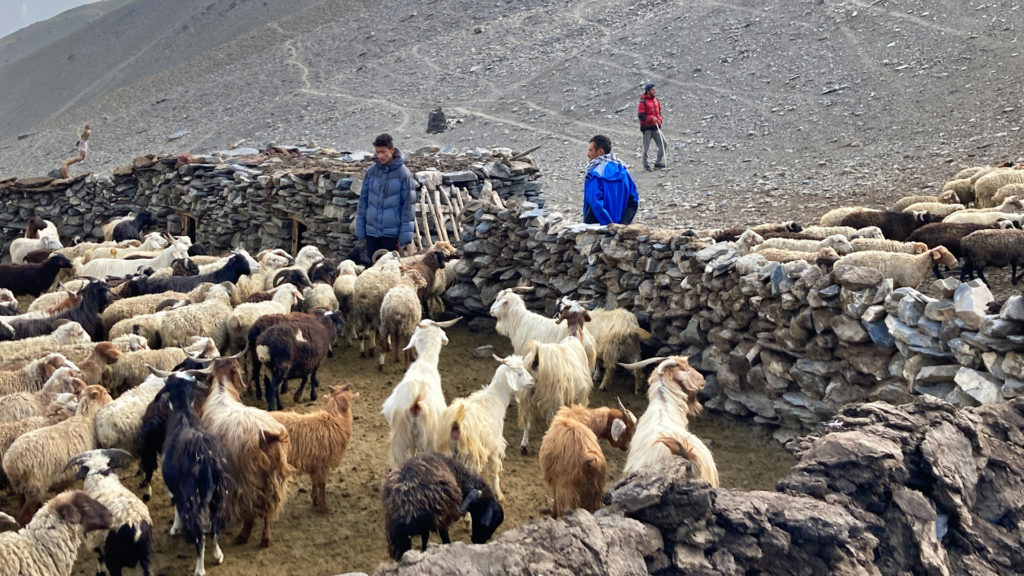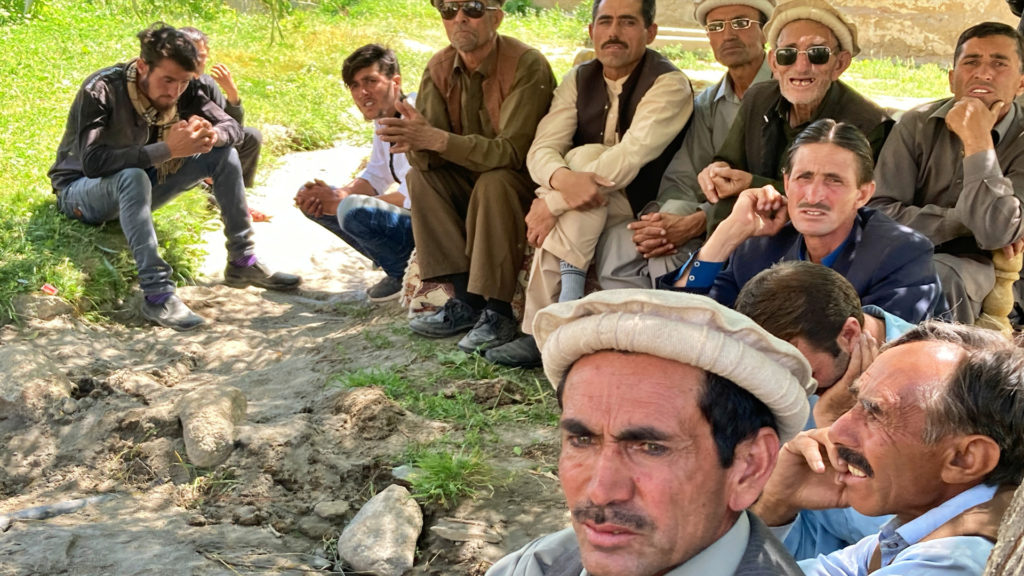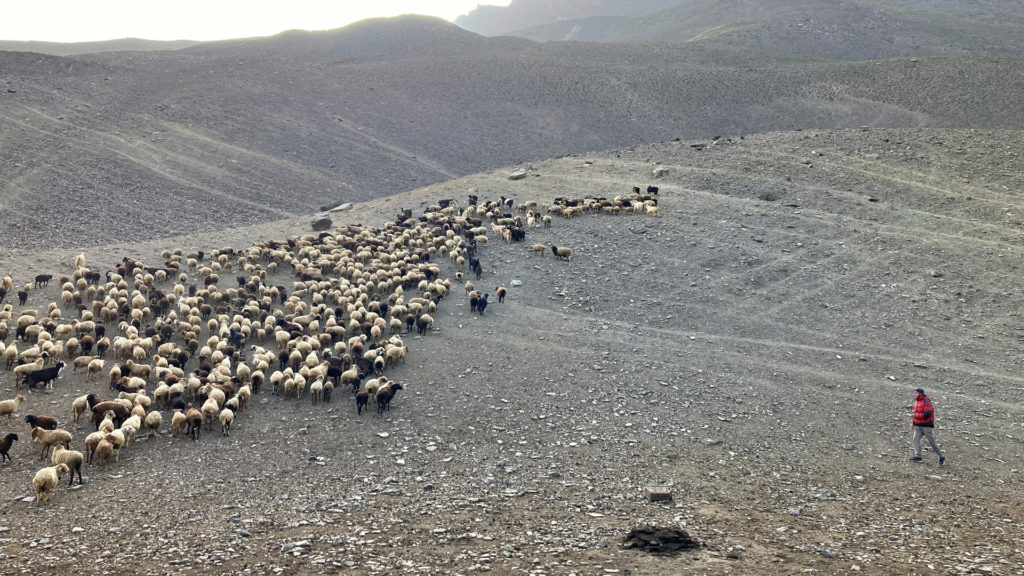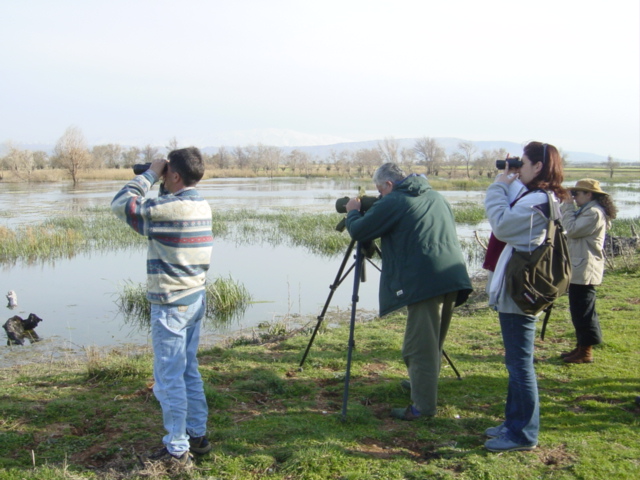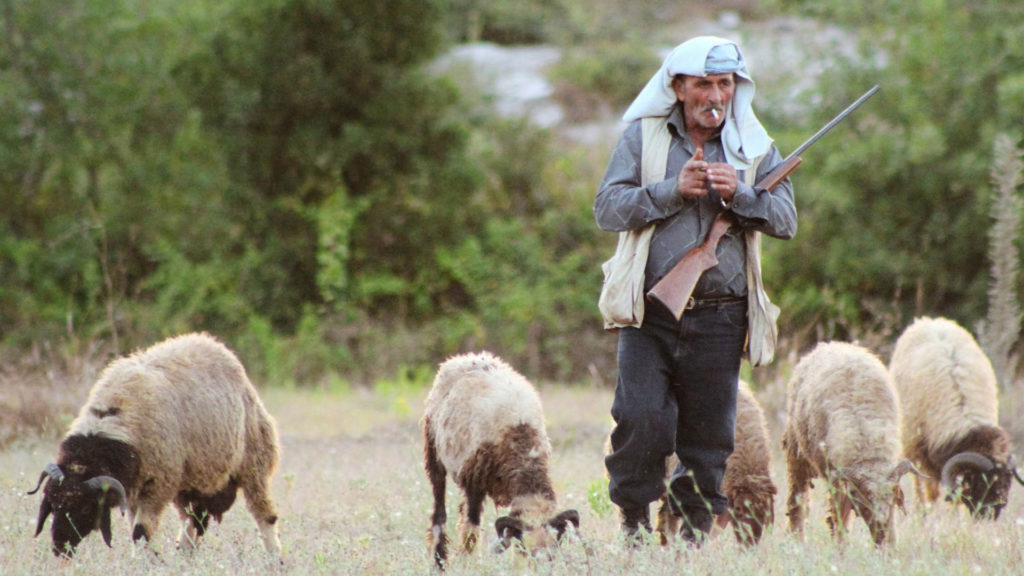
The following descriptions of territories of life across West and Central Asia were collected from the ICCA Consortium membership in the region. Cases have been grouped based on the ecosystems where these ICCAs exist.
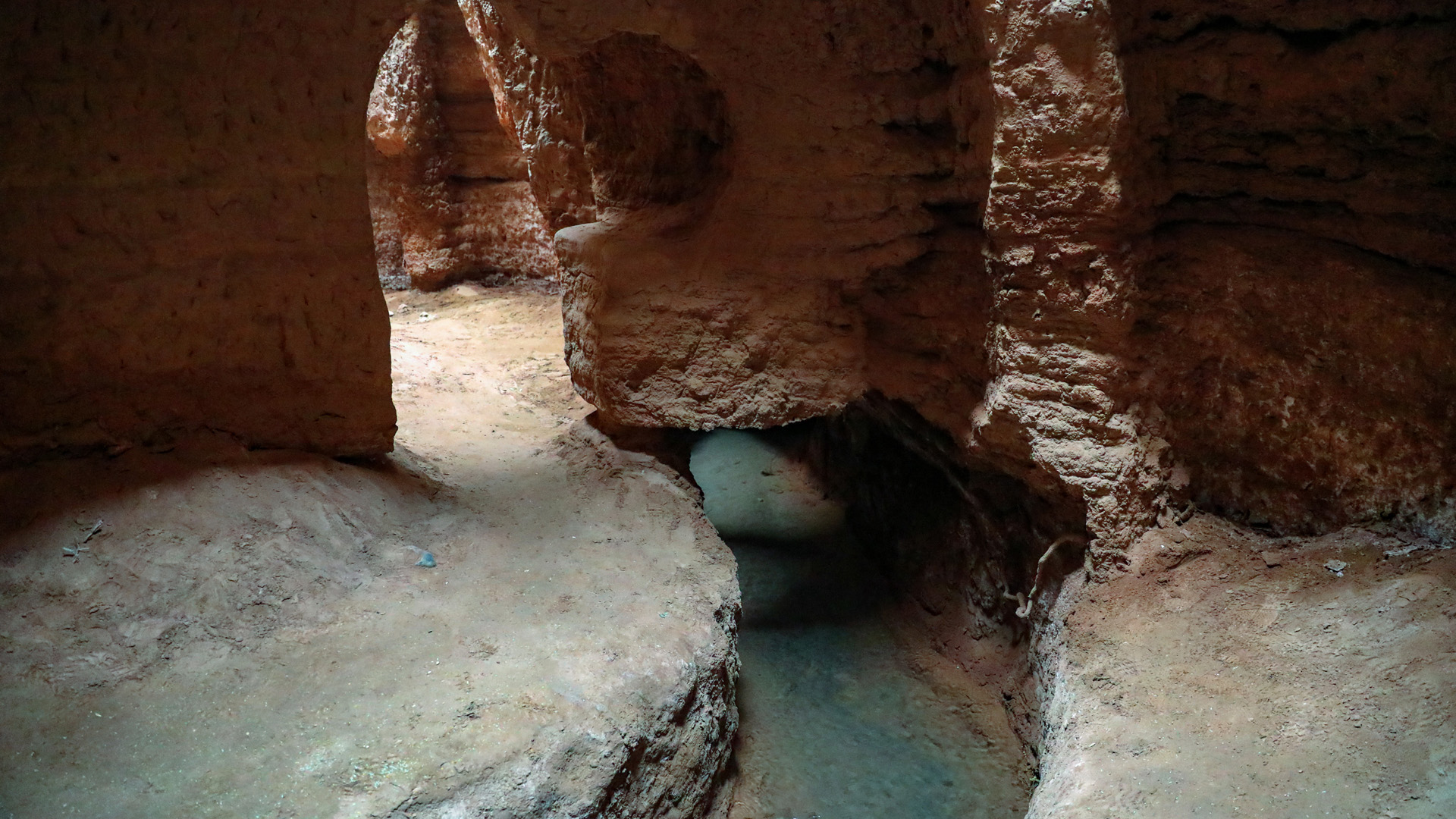
Kariz in Shafiabad, Iran. Photo: Ninara/Flickr
7
Kariz irrigation system, ranging from Iran to Xinjiang
Kariz underground water channels: Ensuring access to water in drylands through traditional irrigation system
Source: Nejat Malikyar, GREDO, and Nina Aminzadeh, CENESTA
Location: Badakhshan, Afghanistan, and Takab, Iran
Community: Wakhi and other indigenous communities in the Hindukush Mountains, and beyond
Practice(s): Indigenous knowledge, integrated irrigation, and agriculture in arid/semi-arid environments
Kariz is a network of underground canals for bringing water from highlands to hot arid and semi-arid zones, for drinking and irrigation. Kariz systems exist in many regions of West and Central Asia and are known as falaj in Oman, khettara (or foggara) in North Africa, Kariz in Afghanistan and Pakistan, and qanat in Central Asia. It is estimated that there are about 33,000 kariz/qanats in Iran and about 3,000 in Oman alone (Mei 2014).
The kariz system has traditionally been a very effective means for ensuring a source of water for people in
the Wakhan area and other indigenous and remote territories in the Hindukush mountain range of
Afghanistan. It serves as a major source of irrigation and drinking water in arid and semi-arid areas. These
are usually constructed on a communal basis, yielding a water flow up to 200 litres/second and thus serving up to 200 shareholding families. Each ‘share’ in a Kariz system represents the amount of time that water is available for irrigation purposes. These shares may, in turn, be rented out and are often fragmented into even smaller units. The particular nature of the kariz system has also helped to create unique societal relationships and socio-economic conditions in the villages they serve. Unfortunately, traditional systems have in many instances been replaced by modern but often less sustainable hydraulic infrastructure (Mei 2014).
Drying up of Kariz due to installation of newer tube wells and dug wells, lack of maintenance, and droughts across the country – all these are putting the local users under critical pressure. Overconsumption of underground water using deep wells and lack of coordination in water management in Afghanistan, Iran and elsewhere is also an emerging problem.
The Kariz /qanat system is a traditional water irrigation method that has been used by many local communities in West and Central Asia for many generations. This traditional system uses only the overflow of the underground water tables, and because of this it does not cause any substantial disorder in the region’s water cycle. Furthermore, in these irrigation systems the area under cultivation is adjusted to the amount of water available, with cultivation patterns being adjusted also in regard to the use of more droughtresistant crops in order to minimize dependence on water. This system thus represents a sustainable water supply mechanism and it has played an integral part in the building and strengthening of local communities’ basic livelihoods based on a balance between the kariz/qanats, the community and the ecosystem. However, Kariz systems across the region need better documentation and dedicated research (Mei 2014) as this would offer more insights for sustainability in the world’s mountains and desert regions (cf. Sharma and Kanwar 2009).
In one area in southern Iran, the women in one community with challenging economic and social conditions have mobilised in recent years, creating the Takab women CBO, Gojino, in which their main activities include handicrafts and, most significantly, the use of participatory film making as a tool for selfempowerment in order to solve their own problems. As their group developed, the women decided to
then take yet another step for their common benefit, dedicating fifteen per cent of their income to dredging and reviving the Qanats (or kariz) of the area on which the life of their villages was highly dependent. The customary management system of Qanat in Iran has always had a patriarchal identity, with the women playing no role in the process of decision making around this vital system. However, after more than two years, finally most of the male shareholders came to agree to let women engage in their meetings and, in due course, “the recognition of women’s role in the customary Qanat management system and their active participation in the water shareholder’s meeting not only brought diversity and creativity of the ideas on how to restore and dredge the Qanats, but also raised the motivation and attachment of the community to the subject” (Aminzadeh 2021).
Documentary film about the Takab women’s CBO, Gojino: “Women of the Sun, A Chronology of Seeing”
garlandmag.com/article/makethe-qanats-flow-women-revivea-patriarchal-tradition
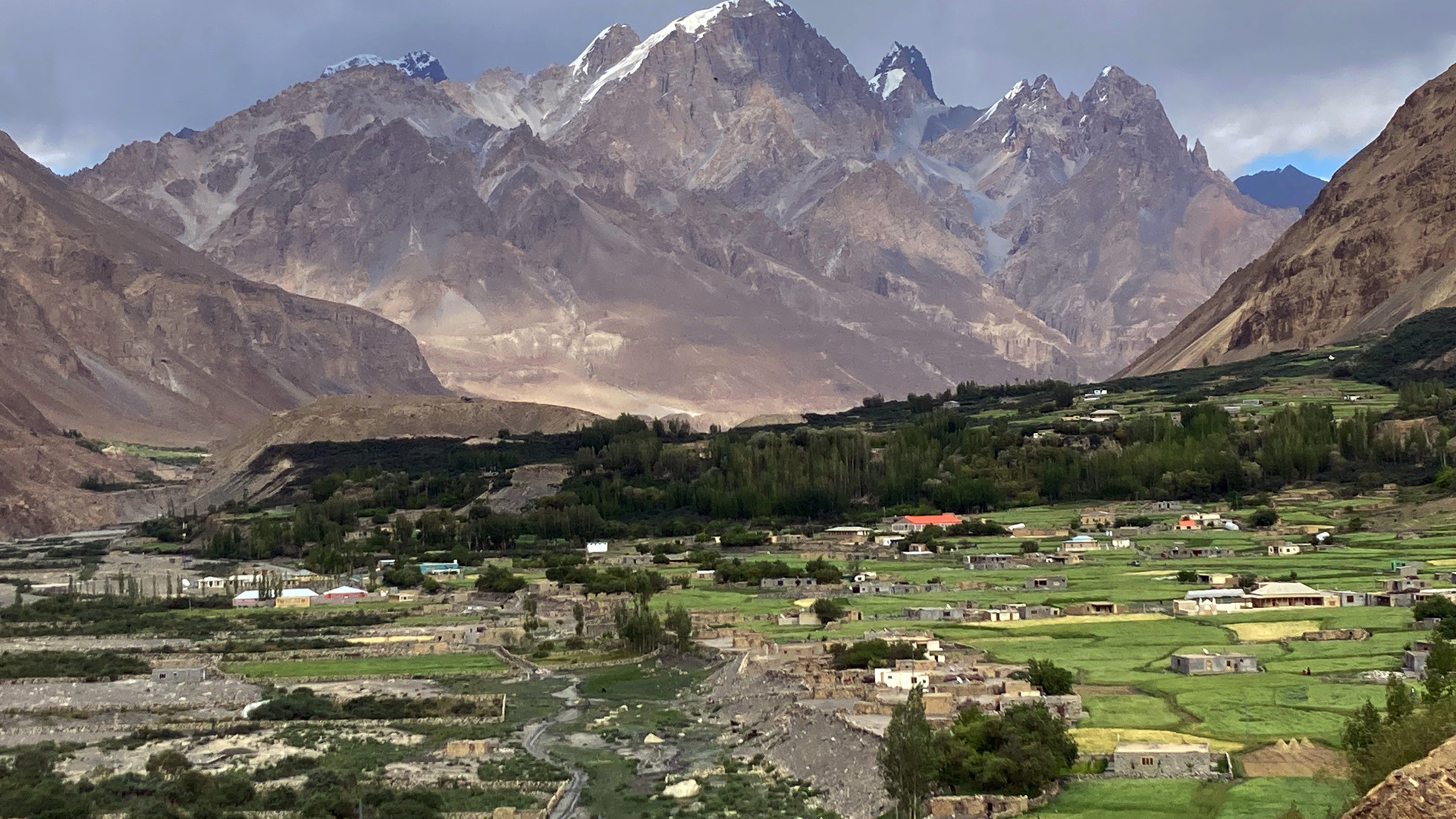
Kariz in Shafiabad, Iran. Photo: Ninara/Flickr
8
Territories of life in the Wakhi region of the Pamir Mountains
Transboundary territory of life and Protected Areas on the Roof of the World (Bam-e-Dunya)
Source: Marc Foggin, Plateau Perspectives, and Nejat Malikyar, GREDO
Location: Wakhi region, Pamir Mountains (in several countries)
Community: Wakhi and Kyrgyz communities
Practice(s): Agro-pastoralism (Wakhi) and semi-nomadic pastoralism (Kyrgyz)
The Wakhi people are distributed across four countries such as Afghanistan, China, Pakistan and Tajikistan. Predominantly Ismaili (in the Shia branch of Islam), Wakhi people sometimes also refer to themselves as Pamiri (Reeves 2017). In this case study, though, the term Pamiri will be used mainly to refer to indigenous or local people of the Tajik Pamirs, including inter alia people from Shugnan, Rushan, and other valleys in the eastern part of Gorno Badakhshan Autonomous Oblast (GBAO). In contrast, mainly Kyrgyz pastoralists live in western GBAO, with relatively little interaction taking place between these two regions and groups. For their part, the Wakhi are, in effect, a subset of the Pamiri people; however, because of their wide distribution and regional level of self-organisation, they are here considered independently.
From around the 2nd century BCE to the 14th century CE, the Wakhan corridor in Afghanistan comprised one of the any Silk Road trade and cultural exchange routes from the Taklamakan Desert in present-day Xinjiang Uygur Autonomous Region, through the Wakhan corridor to regions further afield in West Asia and, ultimately, even Europe. Currently, the Wakhan Valley is inhabited by about 15,000 Wakhi people and the Big Pamir and Little Pamir mountains situated further up-valley are home to 1,250 Kyrgyz people. The Wakhi are agro-pastoralists whereas the Kyrgyz are semi-nomadic pastoralists relying mainly on yak for their livelihoods.
Nomads and semi-pastoralists contribute to regional biocultural diversity. Nomads inhabiting the Hindukush Range of Afghanistan are deeply knowledgeable about the rangelands and the layout of the country. They move long distances to exploit spring and summer grazing lands in the Hindukush’s sub-ranges and return each winter to the eastern and southeastern lowlands of Afghanistan and the border region with Pakistan. Their traditional rotational grazing system has ensured the sustainable use of rangelands over many generations, however it has recently been increasingly abandoned due to the trend amongst transhumant populations to settle – leading to a consequent re-distribution of communal lands to individual families for their own use. There is therefore a need to revive the effective indigenous grazing system in concert with modern range management approaches. Appropriate development and marketing of livestock products is another very important issue, as skins and wool from small ruminants could provide raw material for the leather and wool garment industry. Traditional woollen blankets and rugs can also be major sources of income for families dependent on livestock.
In Gilgit-Baltistan, many Wakhi communities are selforganised, exhibiting varying levels of mobilisation and efficiency, often centred around community-level management of natural resources such as through
hunting tourism. Community-based financing of local development in tandem with conservation endeavours have been facilitated, for example, by community mobilisation and capacity development efforts over the past several decades, as well as increased access to credit and basic education for both women and men. Community initiatives are now also specifically supported and enabled by organisations such as Khunjerab Village Organization (KVO), with further coordination and support coming from Hunza-wide (district-wide) associations of community organisations.
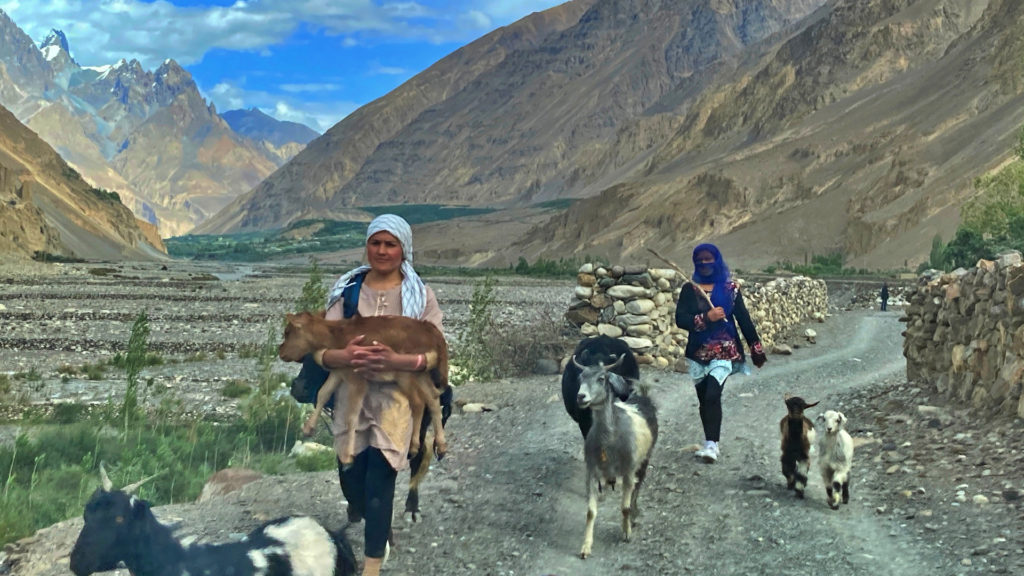
Another notable example of a territory of life in Gilgit-Baltistan is highlighted through the community-level work of Shimshal Nature Trust (SNT). Shimshal is a farming and herding community with around 250 households (approx. 2,000 people) located in the upper part of Shimshal valley in northern Pakistan. Local Shimshali communities cultivate wheat, barley, potatoes, peas, beans, apricots, and apples on a series of terraced glacial and alluvial deposits forming a broad strip between the river’s floodplain and steep mountain slopes between 3,000 and 3,300 metres above sea level. Shimshal’s irrigated agriculture is complemented by the extensive herding of sheep, goats, cattle and yak on community governed and managed high-altitude pastures covering about 2,700 square kilometres of the Central Karakoram.
Centuries-old traditional ecological knowledge, local beliefs and worldviews form a foundation for local nature stewardship practices, which are strengthened by a more general Islamic religious ethic of environmental stewardship and respect for nature as God’s creation (Ali and Butz 2003). The Shimshal Nature Trust (SNT) was established in 1997 to improve local communities’ quality of life in a culturally and environmentally sensitive way while retaining indigenous control of the local environment. Creating the SNT was the community’s response to government initiatives to take the community’s land for the establishment of two formal protected areas, Khunjerab National Park (est. 1975) and Central Karakoram National Park (est. 1994).
In Chitral, there are several communities such as local communities in Broghil valley that are facing similar challenges, due to the recent creation of Broghil Valley National Park. There are also civil society organisations and community organisations in Chitral that focus on social welfare as well as environmental and wildlife conservation. In addition, several community groups focus on raising financial resources through community-based hunting, subsequently coordinating and applying funds to communally agreed projects; as also in Gilgit-Baltistan.
Additionally, across both Chitral and Gilgit-Baltistan districts in Pakistan, there are many national parks and nature reserves, often with zoning systems (including core zones and buffer zones) and various levels of public engagement, partnership, and mutual strengthening with communities. Some levels of conflict and/or diverging priorities persist, but partnerships are advancing as well. Local partners for communities
and protected areas include researchers at Karakoram International University as well as district forestry officials who are entirely supportive of co-management approaches in/near protected areas as well as supportive of ICCAs, though more capacity building and resources are still needed. Further reflections on the future of conservation and the key roles played by local and indigenous communities is offered by Foggin (2022) and also in the GlacierHub blog “Reflections on Visits to Pakistan” published under the Columbia Climate School’s webpage, State of the Planet.
For their part, the Pamiri people in Tajikistan – including local communities from the Rushan and Shugnan valleys, also from the small Ishkashimi community whose language is now highly endangered – live in both Gorno-Badakhshan Autonomous Province (GBAO), Tajikistan, and over the border in Afghanistan’s Badakhshan province. In addition to receiving support from different agencies in the Aga Khan Development Network, which works extensively in the region, communities partner with non-profit organisations such as Green Environment and Development Organization (GREDO). Several community-level associations have recently been established in the Wakhan district of Afghanistan as well.
Notably, the entire Wakhan valley in Afghanistan was brought into the Wakhan National Park, established in 2014, managed as an IUCN Category VI protected area. The ecology of Wakhan National Park is governed principally by its very high elevation, with 59% of the park area being comprised of barren ground and a further 14% covered entirely by glaciers. This region comprises the source, or headwaters, of most of the Pamiri rivers flowing into the globally renowned Amu Darya River, the largest river in Central Asia by volume. The Wakhan region also is an important habitat for 25 species of mammals and 250 species of birds; including the Marco Polo sheep, snow leopard, Ladakh urial, large-billed reed warbler, and others. The Wakhan National Park is recognized as a Protected Area with Sustainable Use of Natural Resources, thus intended to protect natural places together with associated cultural values and traditional natural resource management systems. The recently established Wakhan National Park subsumes within it the previously proposed Big Pamir and Teggermansu Wildlife Reserves, with its unified management plan now replacing the plans for these two smaller reserves.
Various agropastoralist and semi-nomadic pastoralist communities in the Wakhan Valley and across the larger Pamir high mountain region have developed their territories of life over the course of many centuries. The communities have been cooperating with international organisations such as Aga Khan Foundation (AKF) to promote more sustainable livelihoods. The creation of the Wakhan National Park brings with it new potential opportunities for improving biodiversity conservation simultaneously with the meaningful recognition of ICCAs, or territories of life, and the rights of the indigenous communities as well as their genuine involvement in co-management and shared governance of the national park. Parallel experiences in the development of community conserved areas (often with hunting-based tourism) and partnerships between local communities and protected areas in northern Pakistan can equally serve as models and be further extended in the region.
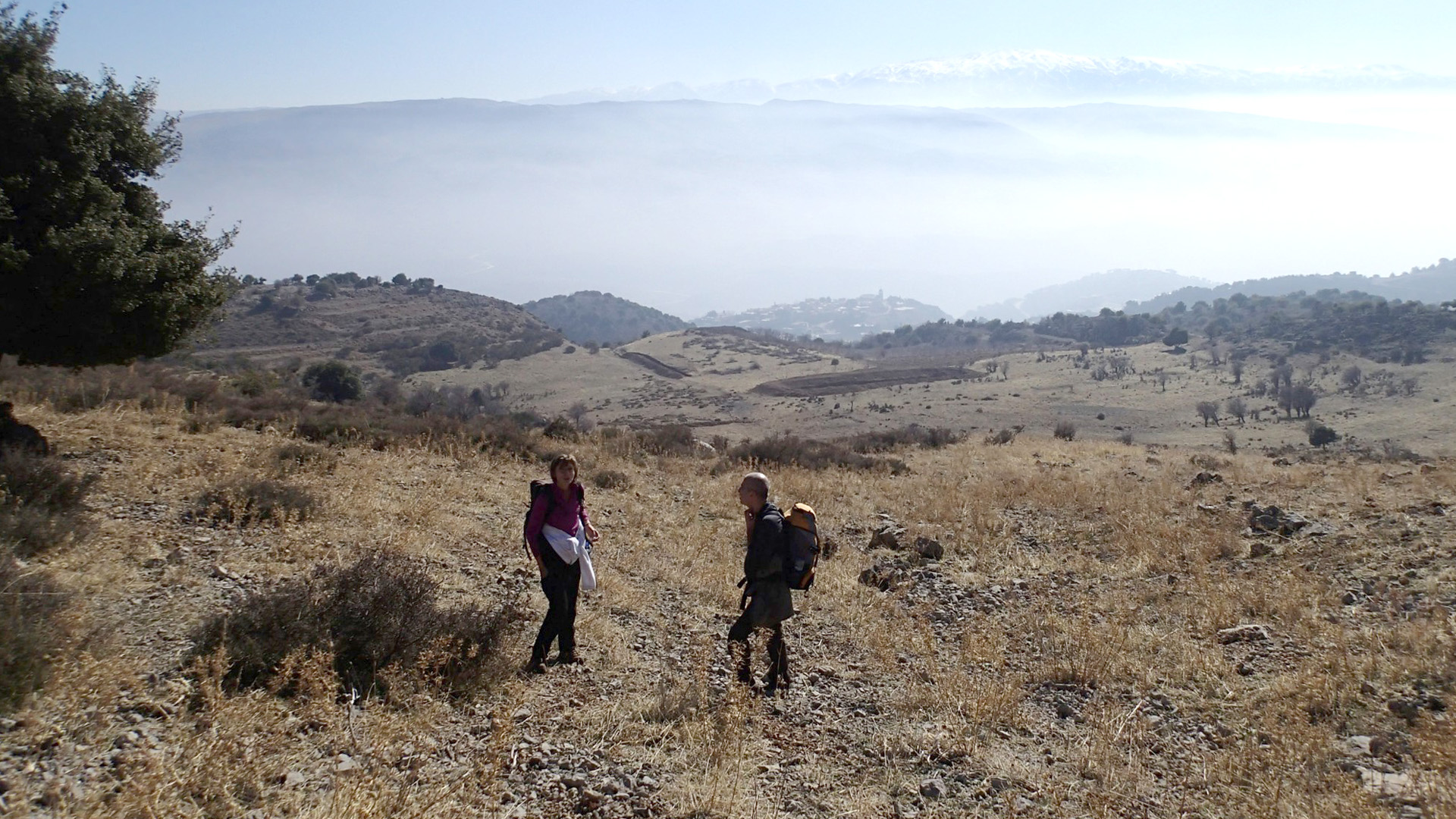
Hima system in Lebanon. Photo: Bassima Khatib
9
Al-Hima system in Lebanon
Reviving centuries-old stewardship traditions in the Middle East
Source: Bassima Khatib, SPNL, Lebanon
Location: The Middle East and Levant
Community: Various local communities
Practice(s): Traditional pastoralism
Al-hima (meaning “a protected place” or “protected area” in Arabic) is a traditional indigenous model in the Middle East that evolved as an adaptation to the harsh environment (Kilani et al. 2007). Originally, it was an area to which its owner imposed access restrictions but it evolved to signify a rangeland reserve, a piece of land set aside seasonally to allow regeneration. It evolved over the years with different cultures, where Islam has added to its social values, such as equality, common benefit, benefit for the poor, etc. Nowadays, hima is an area that is set aside permanently or seasonally for the public good and meets the following four criteria:
- It should be constituted by the ‘imam’ – deemed as the legitimate governing authority
- It should be established in ‘the Way of God’ – for purposes for the public’s welfare
- It should not cause undue hardship to local people, i.e. not deprive them of any resources that are indispensable to their subsistence and their wellbeing
- It should realise a net benefit for society (more benefit than harm)
Since 2004, the Society for Protection of Nature in Lebanon (SPNL) has been supporting local communities in their efforts to revive the Hima, a long-standing traditional community-based approach for the conservation of key biodiversity sites in collaboration with municipalities and other local authorities. Through establishing himas, local communities participate in decision making, promote the sustainable use of natural resources, and alleviate poverty through creating alternative forms of income generation. Since 2004, SPNL has supported the re-establishment of 25 himas in key biodiversity areas; namely Ebeles-Saqi in South Lebanon, Anjar and KfarZabad wetland in Central
Bekaa Valley, West Baalback, Qoleileh, and Mansouri on the southern coast, Maabour Alabiad in Upper Akkar, Andket in Akkar, Menjez and Charbein in Upper Hermel, Jdeidet El-Fakiha in North Bekaa, Roum and Qaytouli in Jezzine, AinZebdeh and Kherebet Anafar, Qaroun and Aitanit in West Bekaa, Jbeil, Tarshish, Aakoura, Kayfoun, Kfar Matta, Ras Al Maten and Hammana in Mount Lebanon, and Anfeh in Keserwan. Himas focus on empowering local communities, improving their quality of life, and enhancing livelihoods as well as promoting the sustainable use (and through this, conservation) of natural resources in collaboration with the municipalities and local communities.
SPNL is merging the traditions and values of the Hima approach with modern scientific techniques, such as identification of ecological sites, stakeholder analysis, and using participatory approaches for involving the local communities in the visioning, planning, and implementation of the Hima projects.
Hima projects concentrate on scientific research (social and ecological), situation analysis, and the development of a management plan for the Hima sites that take into consideration poverty alleviation and providing alternative, ecologically friendly work opportunities for local people that support their livelihood and quality of life (for example, through ecotourism, homestay facilities, visitor centres, serving as nature guides, and cultural artisanal products and food).
The Hima approach concentrates on the involvement of the local community through its participatory framework. It makes sure to involve underprivileged groups, such as women and youth, empowering them to become more active members of society. SPNL applies gender-sensitive planning and targeting to make sure women are well served in development programs. Women committees and cooperatives are an example of social assets promoted by SPNL. Five programs have been developed by SPNL under its Hima framework, namely Hima Schools, Homat Hima, Souk Hima, Hima to Hima, and Hima Farms.
